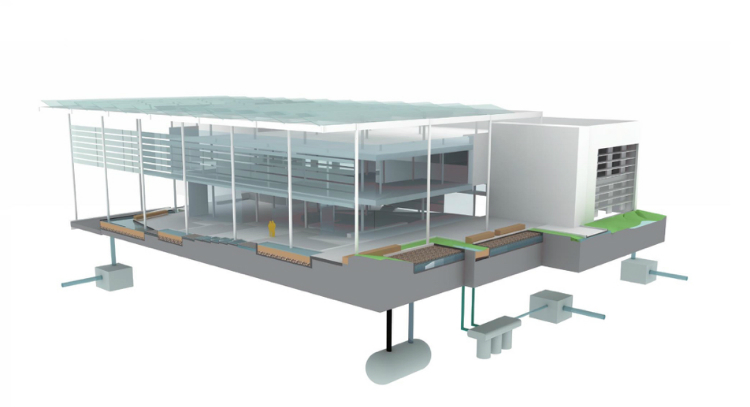The Living Building at Georgia Tech crosses an end-of-the-year threshold Wednesday as the building’s architects present their proposed schematic design to the university’s Planning and Design Commission.
It’s the third phase of the project that Tech’s panel of design advisers has been asked to endorse. In March, the commission chose the architectural firms Lord Aeck Sargent and The Miller Hull Partnership as winners of the project’s ideas competition. In September, they approved a conceptual design that lined the building’s features up with the activities that the building will house and with the broad requirements of Living Building Challenge certification.
Since September, architects Joshua Gassman of Lord Aeck Sargent and Brian Court of Miller Hull have worked with their own colleagues, as well as engineers, modelers, landscape architects and others, to flesh out more details.
Among the the proposals to be evaluated Wednesday are various options for mechanical systems, as well plans for structural materials, landscaping, shading and the floor plan itself. The Living Building Challenge mandates net positive clean energy, net positive water, urban agriculture and, for the most part, non-toxic materials — all of which make the decision-making on various aspects of the building more complex.
If the commission gives its go-ahead to the proposed schematic design, the design team will move on to a more detailed refinement of the project during its design development phase. The schedule then calls for the team to move on this summer to preparing construction documents. Construction currently is expected to begin in the fall.
We’ll continue to update progress on the project via our Living Building at Georgia Tech Timeline, so keep an eye out for details and eye candy on the schematic design after the commission meeting.
If you want to keep up with progress on the building and on other efforts to transform design and construction in the Southeast, subscribe to our e-newsletter.


